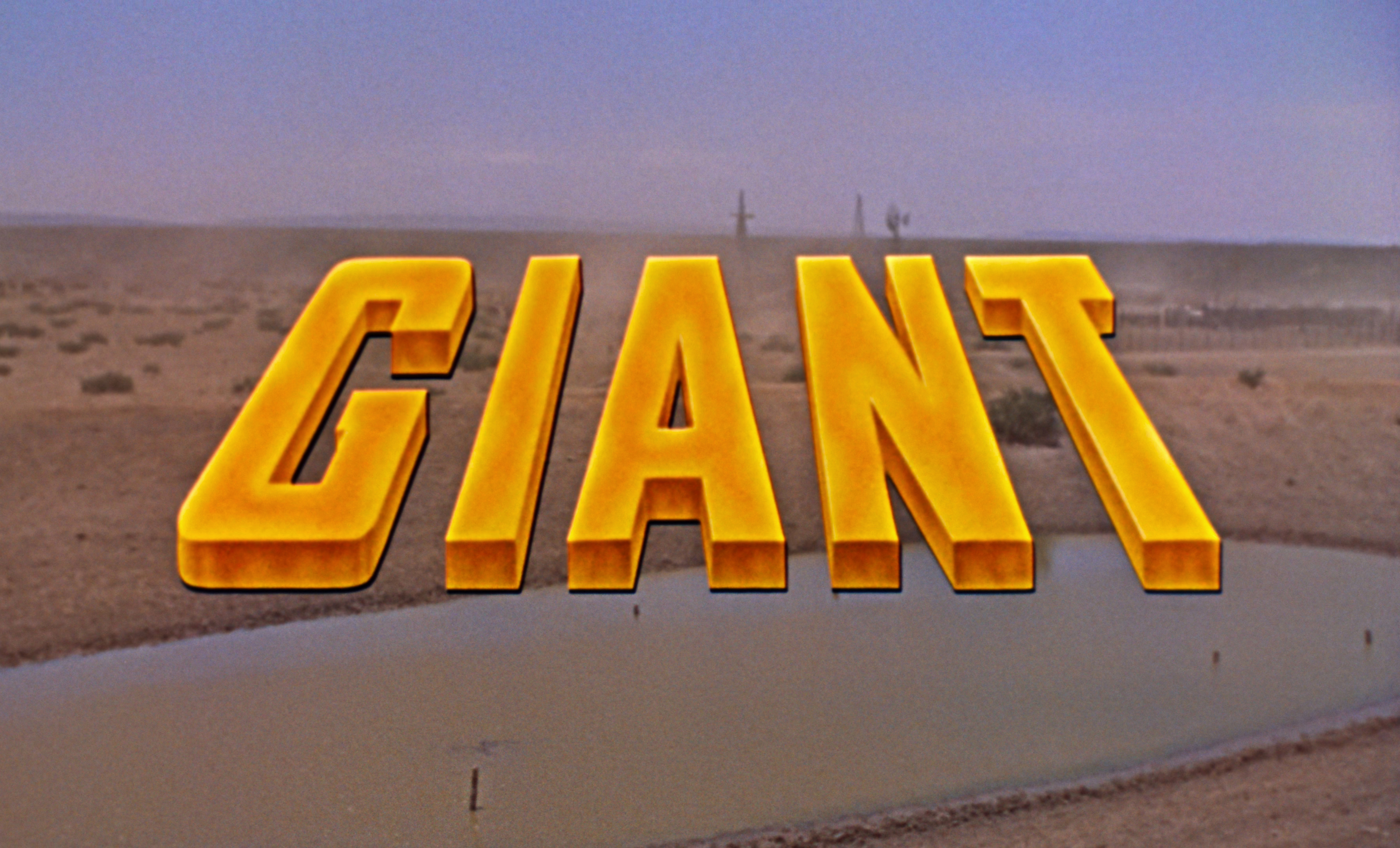
The Film Foundation Restoration Screening Room Resource Guide for
GIANT (dir. George Stevens, 1956)
Presented in The Film Foundation Restoration Screening Room in January 2023 in partnership with Warner Bros.
Table of Contents
2) Special Features
-Introduction by Martin Scorsese
3) EXPLORE Page Materials
-The Film Foundation on Letterboxd
4) Live Screening Commentary Script
Stars Elizabeth Taylor, Rock Hudson, and James Dean light up every inch of the screen in George Stevens’s sweeping and humanistic adaptation of Edna Ferber’s 1952 novel. Taylor is the beautiful Leslie Lynnton, a headstrong woman from Maryland who marries wealthy rancher Bick Benedict (Hudson), moves to Reata, his family’s ranch in Texas, meets farmhand Rink (Dean), and navigates the patriarchal and social class structures of the era. Stevens's detailed research comes to life through William C. Mollers’s crisp and golden color cinematography, shot on location in and around Marfa, Texas. Together they create an unforgettable cinematic experience, one that earned Stevens his second Oscar for directing, as well as nine additional nominations for the film, including Best Picture.
This 4K restoration of GIANT was completed sourcing both the original camera negatives and protection RGB separation master positives. The audio was sourced primarily from a 1995 protection copy of the Original Magnetic Mono soundtrack. The picture and audio restoration was completed by Warner Bros. Post Production Creative Services: Motion Picture Imaging and Post Production Sound.
Restored by Warner Bros. in collaboration with The Film Foundation. Special thanks to George Stevens Jr., Martin Scorsese, and Steven Spielberg.
Introduction by Martin Scorsese
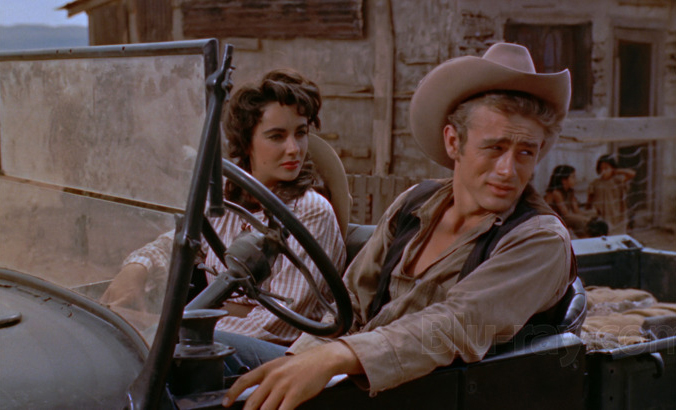
Elizabeth Taylor and James Dean in GIANT (1956)
"Steven Spielberg, George Stevens Jr., and Margaret Bodde talk about crafting the 4K restoration of GIANT" at 2022's TCM Fest.
Jerry Lewis presents 1957's Best Directing Oscar to George Stevens for GIANT, via the Oscars's YouTube Channel.
"What Happened When Liz Taylor, James Dean, and Rock Hudson Took Over a Tiny Texas Town" via Vanity Fair's YouTube Channel.
Amateur video clips from an 8mm camera taken during the filming of the movie GIANT by Don Russell, who was on assignment in Marfa.
Dennis Hopper talking about his experience working with George Stevens on GIANT, via The Director's Series.
A video documentary of GIANT's New York Premiere in 1956, hosted by Chill Wills and Jayne Meadows.
Actors Elsa Cárdenas and Earl Holliman at the Academy Event “60th Anniversary of GIANT” on June 23, 2016 at the Samuel Goldwyn Theater.
Rock Hudson being interviewed about working with George Stevens on GIANT in 1982.
"George Stevens: A Filmmaker's Journey" is streaming on The Criterion Channel
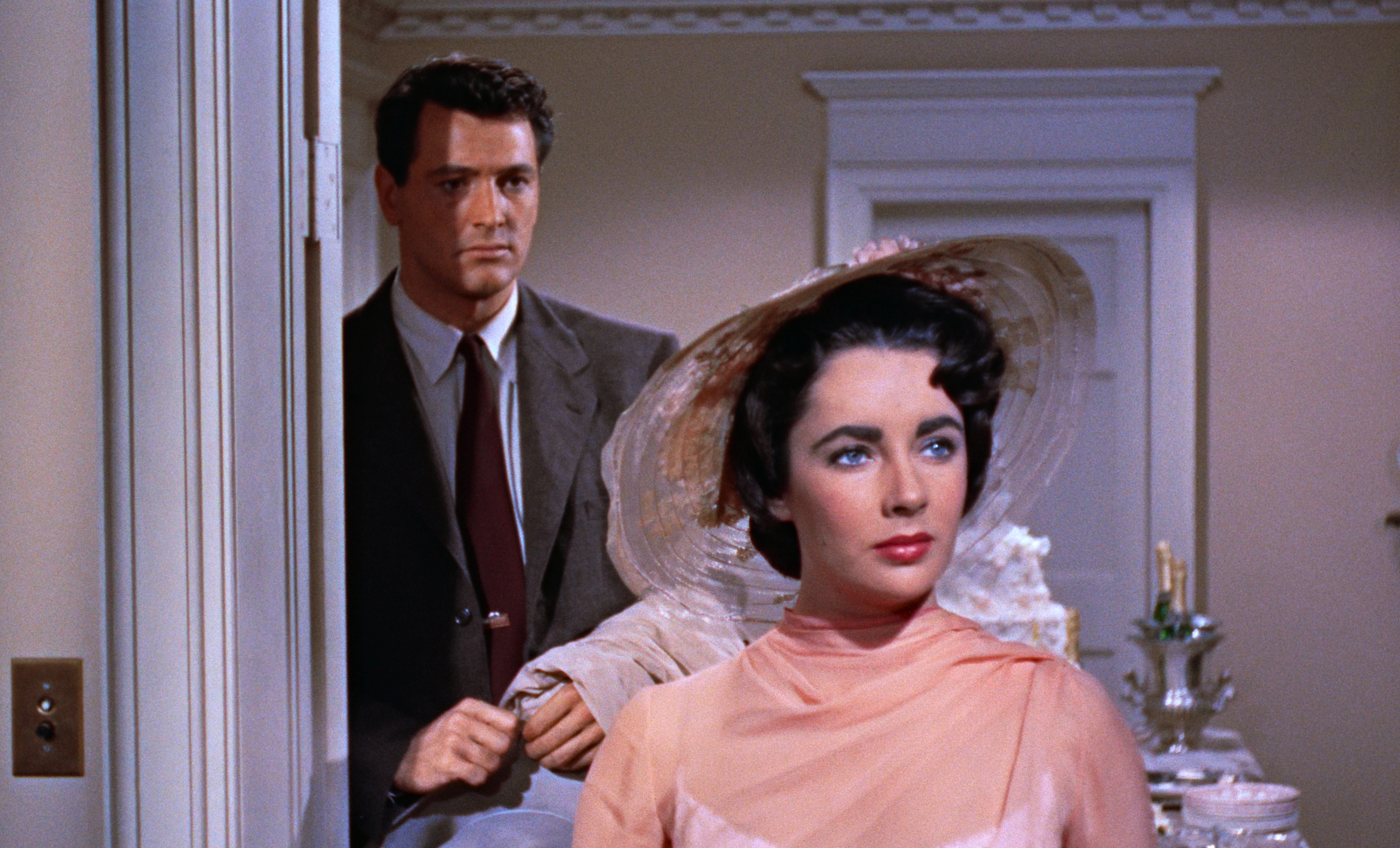
Elizabeth Taylor and Rock Hudson in GIANT (1956)
Giant: George Stevens, a Life on Film, Marilyn Ann Moss, University of Wisconsin Press, 2015
George Stevens: Interviews, ed. Paul Cronin, University Press of Mississippi, 2004
The Real James Dean: Intimate Memories from Those Who Knew Him Best, ed. Peter L. Winkler, Chicago Review Press, 2016
My Place in the Sun: Life in the Golden Age of Hollywood and Washington, George Stevens Jr;, 2022
All That Heaven Allows: A Biography of Rock Hudson, Mark Griffin, Harper Paperworks, 2019
Elizabeth Taylor: The Grit & Glamour of an Icon, Kate Anderson Brower, 2022
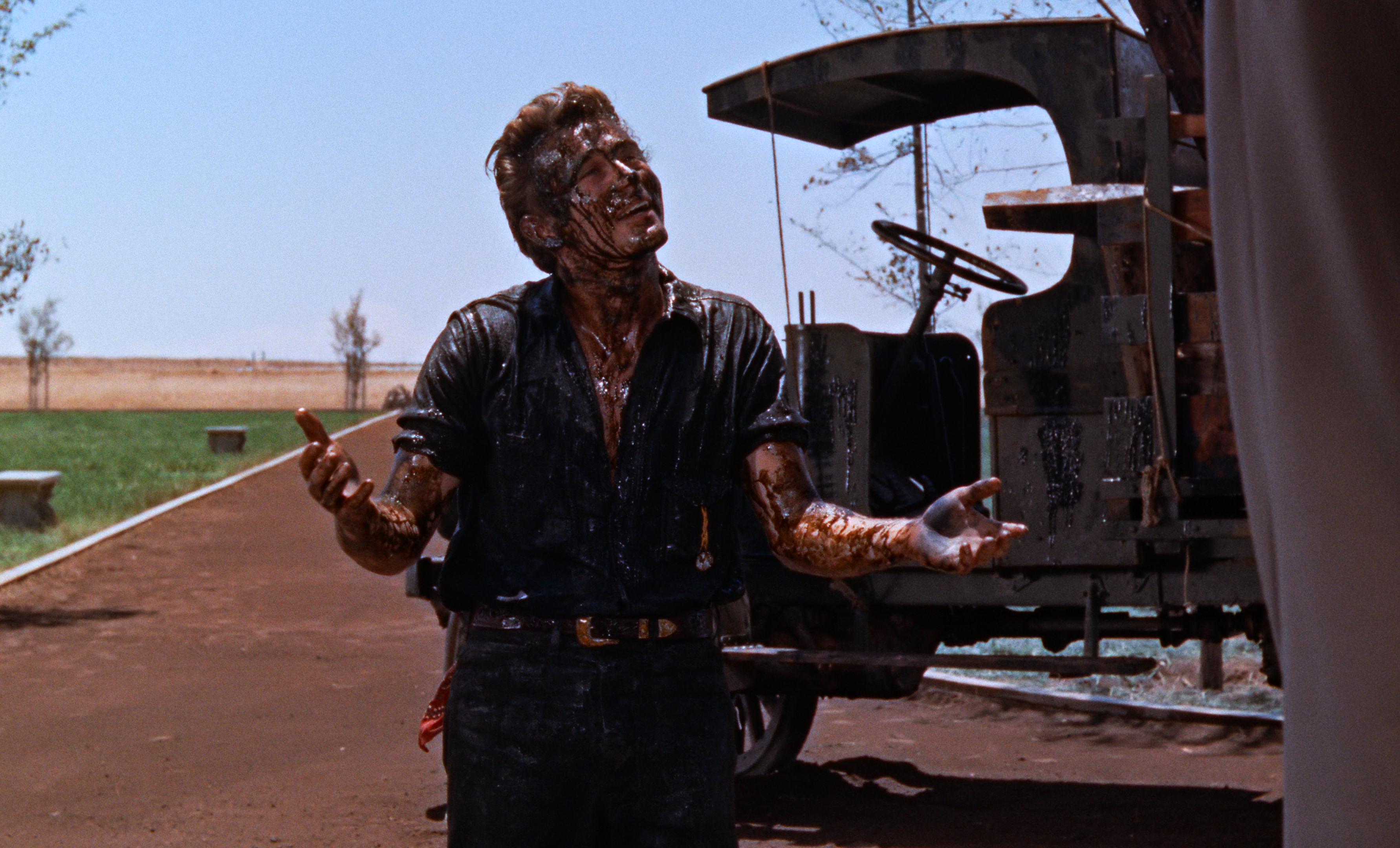
James Dean in GIANT (1956)
Interview with George Stevens Jr. via American Masters.
"Something to Live For: The Cinema of George Stevens," from Il Cinema Ritrovato
"Giantess" by Rebecca Solnit for Harper's Magazine.
Larry McMurtry reviews GIANT for the The New York Times.
"George Stevens’s Epic ‘Giant’ Returns to Film Forum," via The VillageVoice.
Dave Kehr on GIANT for The Chicago Reader.
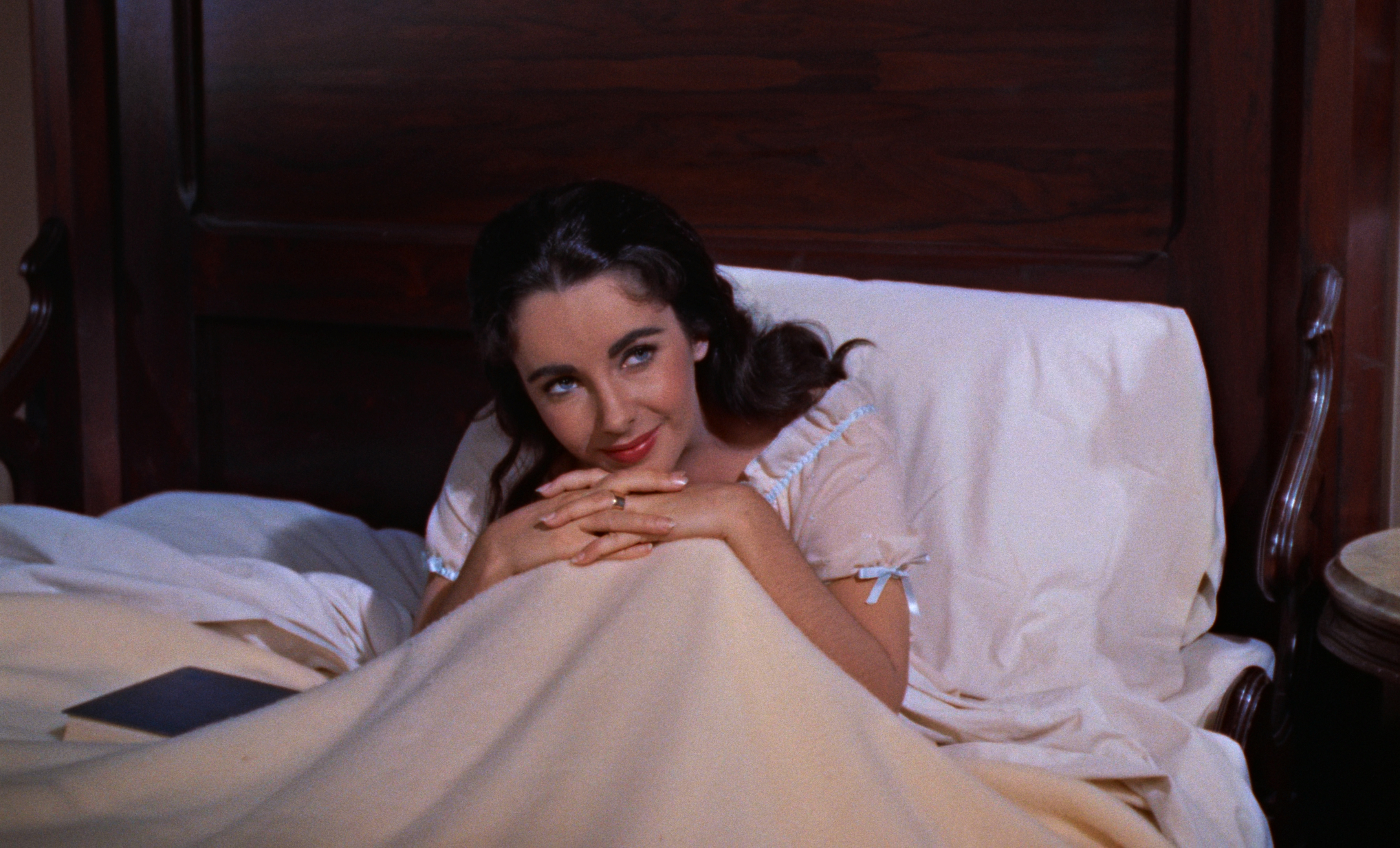
Elizabeth Taylor in GIANT (1956)
The FIlm Foundation on Letterboxd
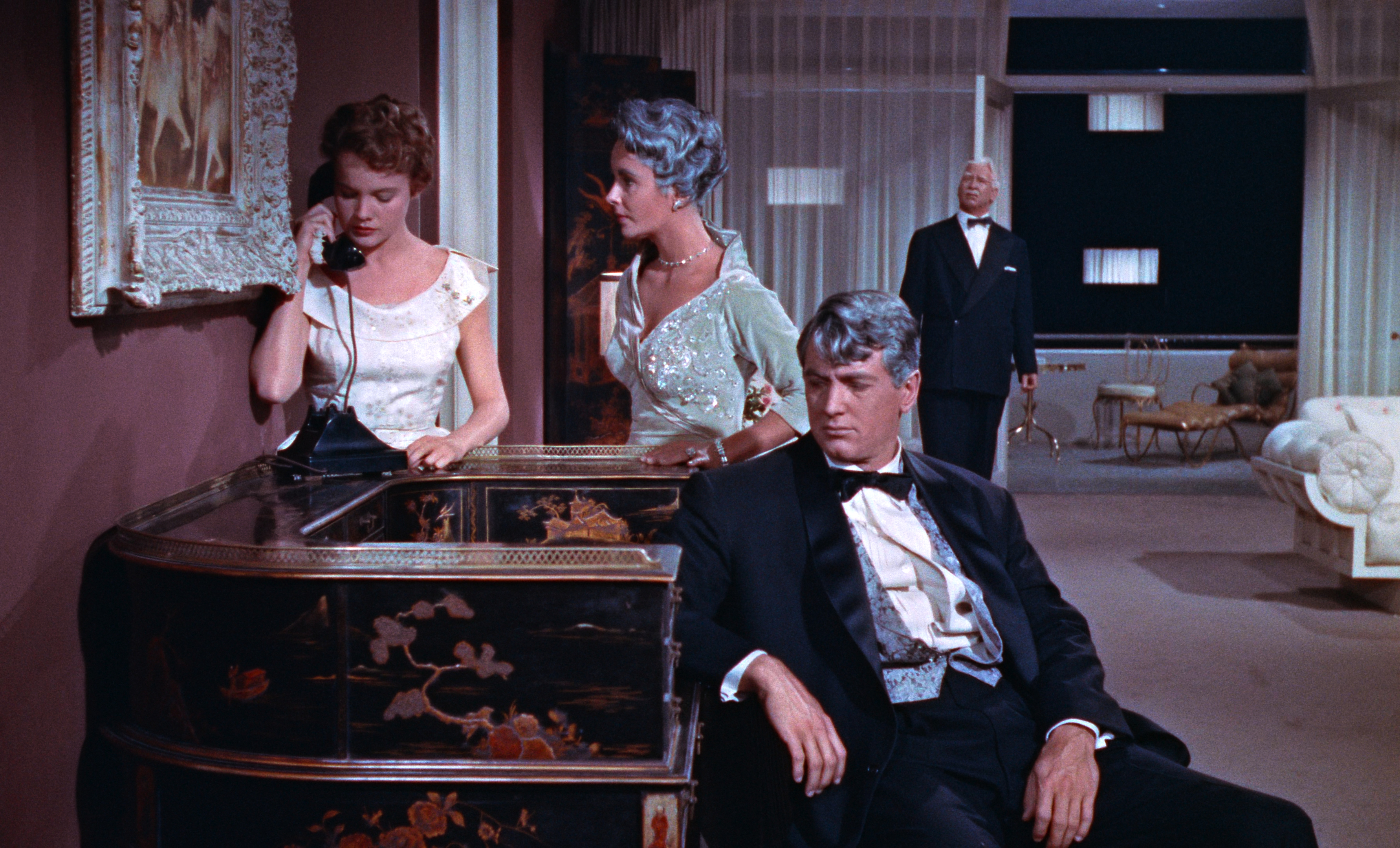
Elizabeth Taylor and Rock Hudson in GIANT (1956)
GIANT - Live Screening Commentary Script
1/9/23
Welcome to The Film Foundation Restoration Screening Room! Tonight we’re screening GIANT (1956, d. George Stevens).
You can stay with us here in the chat to learn more about the film as you watch or you can view the film full screen on-demand at 7pm.
In this chat mode the screening is live and picture controls (rewind/fast forward/pause) will not be available. If you miss anything or need to take a break, that functionality is available when watching on-demand.
Thanks for being here and we hope you enjoy our live commentary. We also encourage you to share your thoughts on the film as we go, making this a communal virtual viewing experience!
00:00:00 - 00:20:00
While the majority of the film takes place in Texas, the opening New England scenes of Leslie Lynnton’s Maryland home were shot on location in Charlottesville, VA on a 17th Century Estate.
It’s said that Grace Kelly was the original choice to play Leslie but that her engagement to Prince Rainier of Monaco stopped MGM from lending her out. They did, however, loan out Elizabeth Taylor for the part, who was said to be Rock Hudson’s choice for the role. Taylor had previously worked with George Stevens in 1951 on A PLACE IN THE SUN.
In an interview, Taylor would recount how Stevens worked as a director:
“I had never seen any director, certainly at MGM, work out the plan of the scenes in drawings, scene by scene, the sets, the costumes, almost frame by frame he’s worked it out. And I had never ever seen that and I was so impressed.”
To learn more about Stevens working relationship with Taylor, watch the interview with her all about the making of GIANT, linked to below:
https://youtu.be/pV2HaQtqy4M?feature=shared
00:20:00 - 00:40:00
Marfa and Valentine, Texas served as the home for all the Texas locations in the film, but the Benedict home was actually built at Warner Brothers and shipped to the Worth Evans Ranch, twenty-one miles from Marfa, where it remains to this day.
There’s a GIANT Image Gallery, available on this page, where you can find a ton of wonderful behind the scenes photos, courtesy of George Stevens Jr., from their time shooting in Texas.
GIANT would sadly be James Dean’s final screen appearance, four days after filming his final scenes, Dean was killed in a car crash near Salinas, CA.
00:40:00 - 01:00:00
Radio, stage, film and television actress Mercedes McCambridge plays Luz Benedict. Before working on screen, McCambridge was known for her work on stage and on the radio, with Orson Welles declaring that she was "the world's greatest living radio actress."
McCambridge’s film career started in 1949 when she was cast alongside Broderick Crawford in ALL THE KING’S MEN. She was nominated for an Oscar for Best Supporting Actress and won the Golden Globe. From here she would go on to work with Nicholas Ray in JOHNNY GUITAR (1954), Anthony Mann in his CIMARRON (1960) remake (also from an Edna Ferber novel!), and Orson Welles, in an uncredited appearance in TOUCH OF EVIL (1958).
One of McCambridge’s more controversial and lesser known roles came later in her career when she was cast to voice the demon that possesses the girl played by Linda Blair in THE EXORCIST (1973). At first she received no credit, director William Friedkin said she didn’t want it, but then, with the help of her union The Screen Actors Guild, she received a credit on the film.
01:00:00 - 01:20:00
The score of GIANT was created by the great composer, Russian-born (now Ukraine) Dimitri Tiomkin, known for his work in the Western genre on films like DUEL IN THE SUN (1946), RED RIVER (1948), HIGH NOON (1952), THE BIG SKY (1952), GUNFIGHT AT THE OK CORRAL (1957), and more. Over his storied career, spanning 50 years, he was nominated for 22 Oscars and won 4. His Hollywood career started when he worked with Frank Capra on LOST HORIZON in 1937.
In an interview, Tiomkin talked about his goal for creating the music for GIANT:
“The most important thing is to capture the feeling of this great land in this great state of Texas.”
Watch his entire interview linked to below:
https://youtu.be/OFeJOsutmPc?feature=shared
01:20:00 - 01:40:00
Uncle Bawley is played by character actor Chill Wills. His unusual name (technically a nickname) was the result of his being born on the hottest day of 1902. He started out as a singer before starring in a few Westerns and then becoming a full time actor. Two of his most notable performances were the voiceover work he did on the FRANCIS series of films (as the titular mule Francis) and as "the city of Chicago" in THE CITY THAT NEVER SLEEPS (1953).
To learn more about Wills, be sure to visit the Film Foundation Letterboxd account, linked to below:
https://letterboxd.com/tff/list/starring-chill-wills/
01:40:00 - 02:00:00
Edna Ferber’s sprawling 3-generation novel “Giant,” came out in 1952, with the character of Jett Rink being based on Texas oil-tycoon Glenn McCarthy, also known as "Diamond Glenn" and "The King of the Wildcatters." Jordan Benedict II was based on Robert "Bob" J. Kleberg Jr. and the King Ranch in Kingsville, Texas.
Ferber started writing in 1911 and in 1918 the first of her works, a play entitled “Our Mrs. McChesney,” was adapted for the screen and turned into a film directed by Ralph Ince. Her stories and plays were adapted into films directed by William A. Wellman, James Whale, Gregory La Cava, and more, with many of them being remade from earlier silent versions.
02:00:00 - 02:20:00
Director George Stevens had a long and prolific career in Hollywood but somewhat surprisingly got his start at Hal Roach studios, where he was instrumental in the careers of Laurel and Hardy. The studio was having trouble getting Stan Laurel’s blue eyes to register on film and Stevens filmed a successful test with him using panchromatic film. He went on to be the cinematographer on 35 Laurel and Hardy shorts.
Also of note was Stevens’s experience in World War II. He headed up a film unit in the U.S. Army Signal Corps and recorded the only color film of the war, including D-Day in Normandy, the Duben labor camp, and Dachau concentration camp. In 2008, Stevens's footage was entered into the U.S. National Film Registry by the Library of Congress.
We have a beautiful video extra, available on this page, by the critic and director Nicolas Saada. In it he speaks about Stevens’s career in connection to his time in the war:
"Stevens is brilliant and he was already a brilliant director in the 20s, 30s, & 40s. But his wartime experience changed his whole perception of cinema"
02:20:00 - 02:40:00
Cinematographer William C. Mellor worked with many directors during his time behind the camera but he spent the most time with William A. Wellman and George Stevens. With Stevens, he would shoot A PLACE IN THE SUN (1951), GIANT (1956), THE DIARY OF ANNE FRANK (1959), and the last film he would work on, THE GREATEST STORY EVER TOLD (1965). He first worked with Stevens in the film unit together during World War II.
02:40:00 - 03:00:00
GIANT’s multi-generational story required a good make-up artist, which they found in Gordon Bau, a make-up artist and supervisor who worked in the industry from 1937 - 1973, most notably on films like Zoltan Korda’s THE JUNGLE BOOK (1942), Joseph Losey’s THE BOY WITH GREEN HAIR (1948), Roy Del Ruth’s PHANTOM OF THE RUE MORGUE (1954), and with James Dean on EAST OF EDEN and REBEL WITHOUT A CAUSE, both in 1955, the year before they would make GIANT.
Make-up ran in the family for Gordon, as his brother George and nephew Robert were also make-up artists in Hollywood. He and George actually got their start working for a rubber company, where they created rubber parts for industrial use. Gordon would later become known for the application of foam rubber for movie make-up and prosthetics.
03:00:00 - 03:20:00
In case you missed the introduction, here’s Martin Scorsese speaking about GIANT:
“The images, the story, the sweep of it, the saga, the epic, the family drama, the politics, all of that, the nature of the way Liz Taylor’s character is portrayed in the film and her place in that society, all that has stayed with me for my whole life.”
The introduction is available in its entirety on this page.
03:20:00 - END
Thank you so much for joining us! A note there is 2+ minutes of exit music over the black screen, just like when the film was released in 1956! Please listen to enjoy the original GIANT experience.
GIANT was restored by Warner Bros. in collaboration with The Film Foundation. Special thanks to George Stevens Jr., Martin Scorsese, and Steven Spielberg.
The 4K restoration was completed sourcing both the original camera negatives and protection RGB separation master positives. The audio was sourced primarily from a 1995 protection copy of the Original Magnetic Mono soundtrack. The picture and audio restoration was completed by Warner Bros. Post Production Creative Services: Motion Picture Imaging and Post Production Sound.
We look forward to seeing you next month on Monday, February 13th for Jean Renoir’s first color film, THE RIVER (1951).
